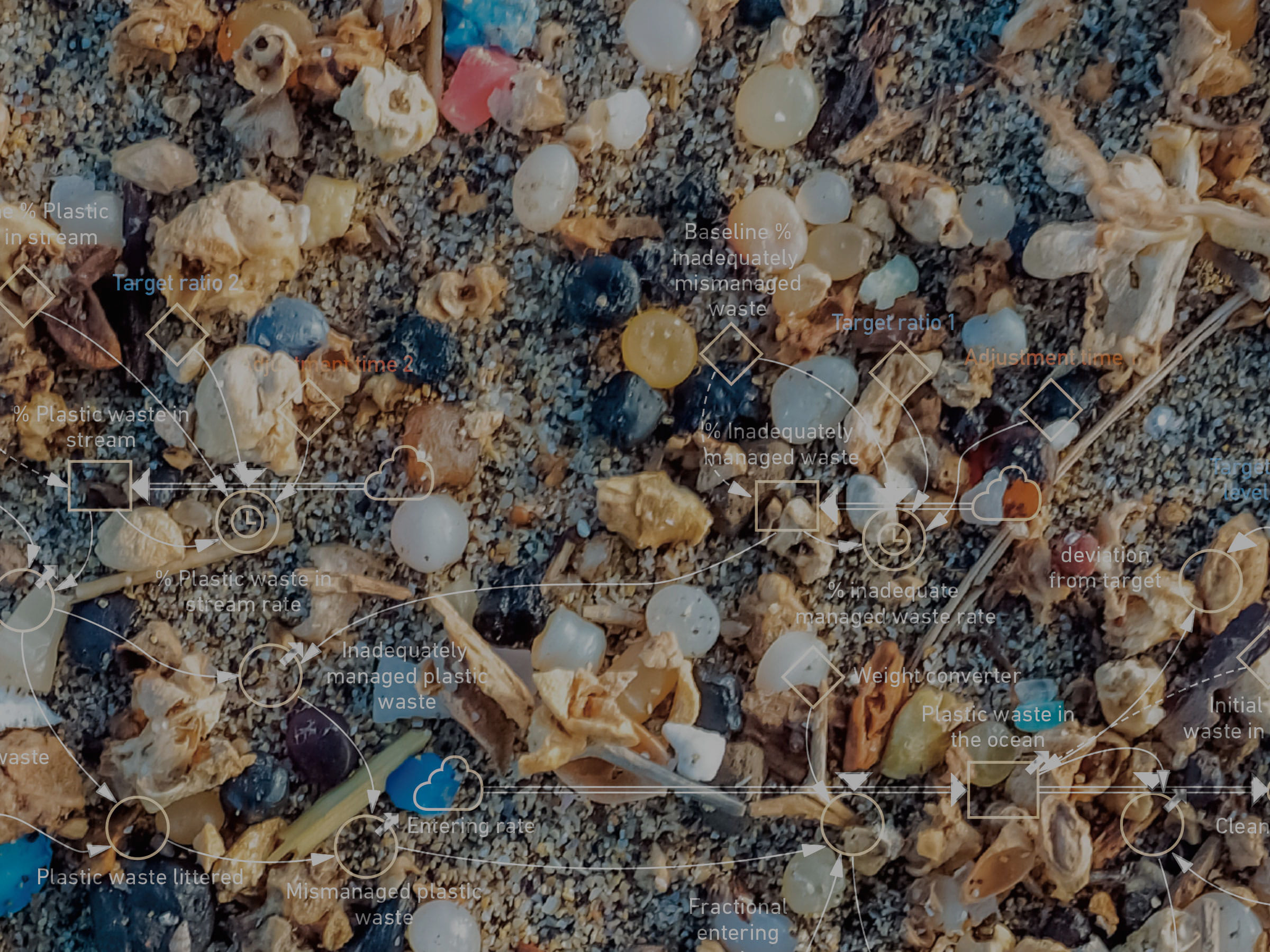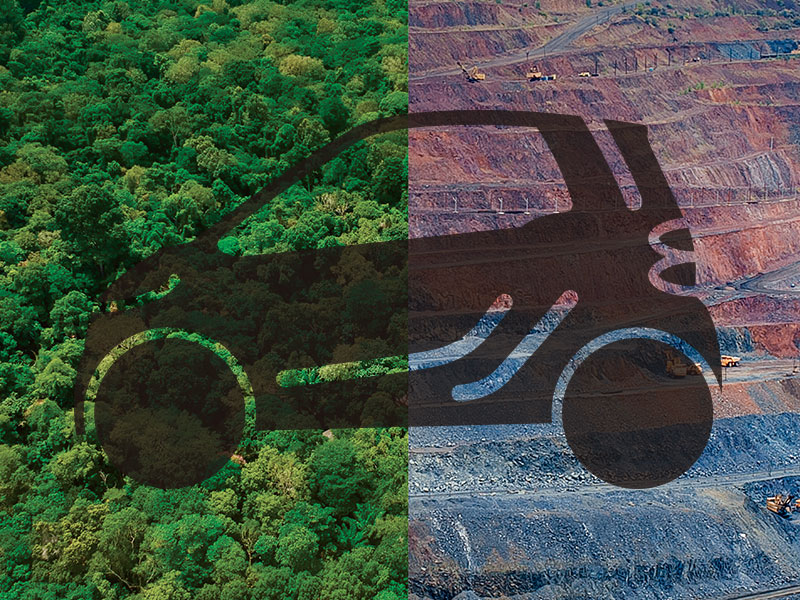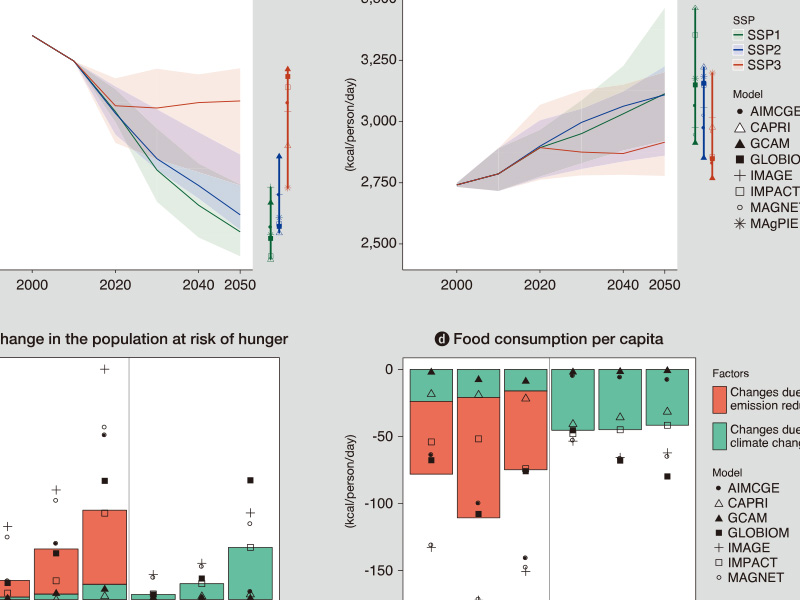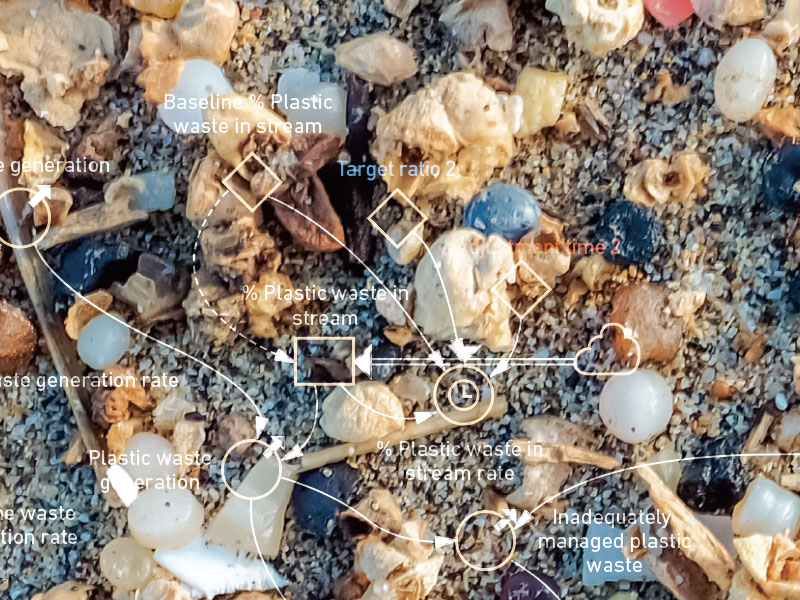STORY #3
Can We Reduce Marine Plastic
Waste to Zero?
Takuro Uehara
Professor, College of Policy Science
fig. Cordier, M., & Uehara, T. (2019). How much innovation is needed to protect the ocean from plastic contamination?. Science of The Total Environment, 670, 789-799.
Forseeing the future with
a simulation model that considers
changes in society, economy, and ecosystems
Plastic is in nearly everything from daily necessities to electrical appliances, building materials, and industrial materials. It is indispensable in today’s society. But until recently, most people had appeared uninterested in what happens to plastic products once they fulfill their purpose.
Today, awareness is growing. An estimated 8.3 billion metric tons of plastic have been produced from the time its mass production began around 1950 until 2015, and 6.3 billion tons of that have been disposed of. All of this plastic continues to accumulate in nature in landfills or dumping-grounds, and some have made their way via rivers into the ocean. According to Takuro Uehara, who studies environmental resource management issues, an estimated 62 million to 130 million tons of plastic waste is generated every year (as of 2010).
“What makes marine plastic waste particularly troublesome is that not only are they semi-permanent and never fully decompose, as time passes, they become smaller and harder to clear up. These microplastics penetrate deep into the ecosystem and impact organisms, the environment, and ultimately people,” Uehara explains.
It is said that plastics dumped in the ocean ride the tide and travel beyond national borders, making their way across the globe, even to remote places. Plastics continue to be produced every day. So, unless we clean up more amounts of them than that which make their way into the ocean, they will continue to accumulate.
This is why the Osaka Blue Ocean Vision, which aims to eliminate additional marine plastic pollution by 2050, was proposed as a shared global vision at the G20 meeting in Osaka in June 2019. But, can we really reduce marine plastic waste to zero while it continues to be dumped in such large volumes?
Before any relevant measures are taken, it is necessary to first understand the reality of the situation. Currently, several studies are underway globally that are attempting to quantify marine plastic waste. However, Uehara is concerned that most estimates remain local and phenomenological. He believes that “it is not possible to institute effective measures when we remain ignorant of the impact they may have on the ecosystem, the impact they could have on reducing such plastics, or their feasibility.” In his research, Uehara considers the relationship between the ecosystem and socioeconomic systems and attempts to approach the issue of marine plastic waste through the context of social-ecological systems. He has constructed a dynamic model in collaboration with Mateo Cordier, a researcher from France.
Their model adopts system dynamics approach, which incorporates the changing elements of society and natural environments, such as demographics, the amount of plastic used and disposed of, and the amount of plastic that reaches the oceans. In short, they have developed the world’s first simulation model that can quantitatively evaluate global marine plastic waste by positioning it on a global scale social-ecological system. The purpose of this model is to evaluate marine plastic waste elimination models by analyzing different scenarios with varied goals, measures, and cost burdens, among other factors, to clarify what measures are more effective and what paths could lead to the successful implementation of such measures.

Uehara and Cordier developed a simulation model capable of quantitatively evaluating marine plastic waste. Adopting system dynamics approach, their model incorporates the changing elements of society and the natural environment, such as demographics, the amount of plastic used and disposed of, and the amount of plastic that reaches the oceans, to evaluate and propose marine plastic waste elimination scenarios.
fig. Cordier, M., & Uehara, T. (2019). How much innovation is needed to protect the ocean from plastic contamination?. Science of The Total Environment, 670, 789-799.
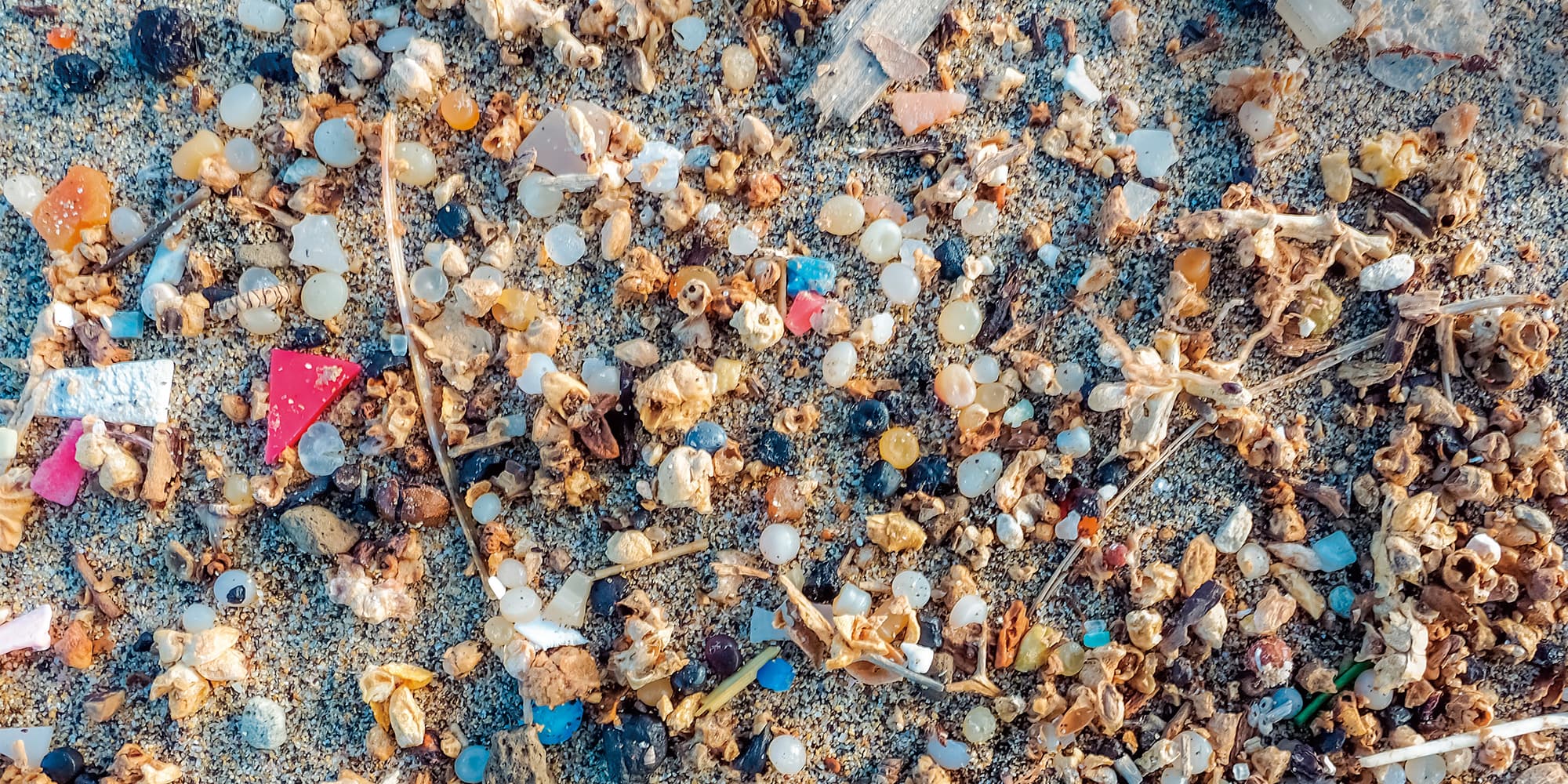
Uehara and Cordier examined several marine plastic waste reduction scenarios until 2030. The first scenario was one in which no measures were implemented, leaving the situation to the dictates of economic growth. In this case, the projections indicated 183 million tons of additional marine plastic waste by 2030, compared with 2010. However, when four elimination scenarios were considered—first, where waste was collected through cleaning activities; second, where inappropriate dumping practices were reduced; third, where alternative products were used; and fourth, where measures were a combination of the first three—some interesting results surfaced.
Each of the first three scenarios failed to reduce any marine plastics, and the best they could do was maintain the status quo. “The only scenario found to have an effect was the fourth, in which the measures of the first three scenarios were all implemented together,” explains Uehara. In this scenario, it was projected that by 2030 the global marine plastic waste would reduce by 111 million tons, compared to 2016–2017 levels.
Another feature of their simulation was the estimation of the financial cost of implementing such measures. According to their projections, to reduce the marine plastic waste by 25% by 2030, compared to the numbers of 2010, a cost of 492 to 709 billion Euros would be incurred. This amounts to 0.7 to 1% of the global GDP in 2017. You can understand from these numbers that in order to realize these goals, quite innovative measures must be taken.
Uehara and Cordier plan to further develop the model to examine scenarios in which the 2050 zero marine plastic pollution goal raised at the G20 Osaka summit is reached. Their model considers the speed of this reduction and the ways in which the structure of the financial burden could impact society and ecosystems. With a renewed sense of purpose, Uehara says: “We wish to contribute to the resolution of the marine plastic waste problem. We wish to go beyond simply having a grasp on the current environmental conditions, but rather produce findings that would lead to effective and actionable policies that take into consideration the impact plastic has on society and on ecosystems.”.
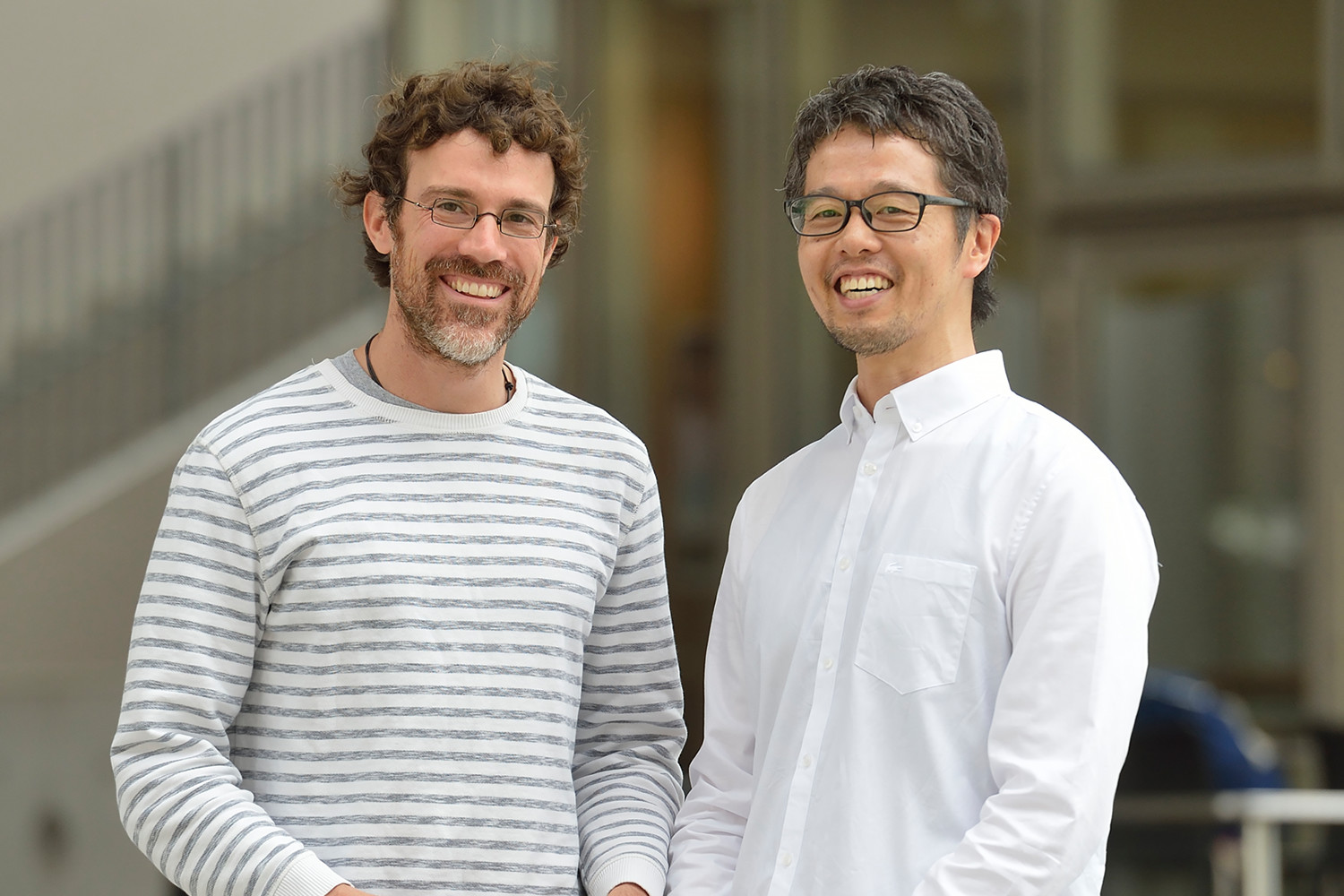
- Takuro Uehara (Photo Right)
- Professor, College of Policy Science
- Research Themes: Research on the relationship between society and ecosystems (social-ecological modeling, sustainability, resilience, marine plastic waste, relational values, satoumi)
- Specialties: Ecological economics, Systems science
- Photo Left/Research Colleague: Mateo Cordier Associate Professor, Versailles Saint-Quentin-en-Yvelines University
